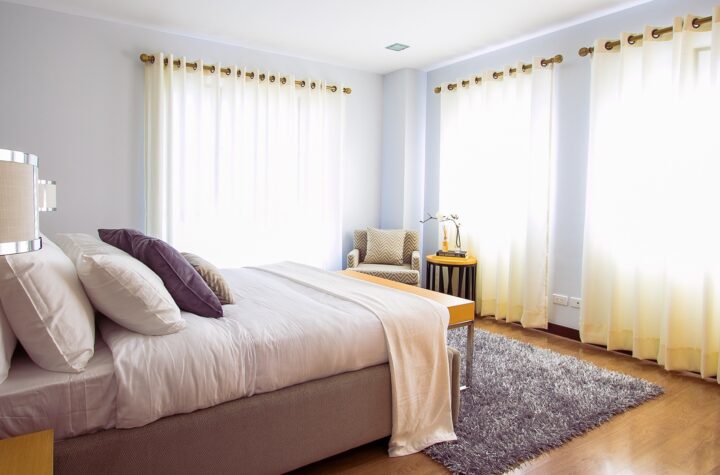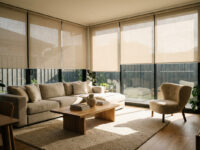Curtains are more than just pieces of fabric that hang from your windows; they are a significant element in home décor, adding personality, style, and functionality to any space. Choosing suitable curtains can transform a room, creating an ambiance that reflects your taste and enhances the overall aesthetic. This comprehensive guide will delve into the world of curtain shopping, exploring everything from fabric types and styles to measurements and installation tips. Whether you are a novice looking to adorn your first home or an experienced decorator seeking fresh insights, this guide will empower you to make informed decisions and make your curtain shopping experience successful.
Understanding Fabric Choices
Selecting the suitable fabric is one of the first and most crucial decisions when shopping for curtains. The fabric not only determines the overall look of the curtains but also influences their functionality. Most custom curtains often come with various fabric options, each with its characteristics. Here are some standard fabric options to consider:
- Cotton: Cotton is a versatile and widely used fabric for curtains. It is lightweight, breathable, and comes in various patterns and colors. Cotton curtains are easy to maintain and provide a crisp, casual look suitable for various rooms, including living spaces and bedrooms.
- Linen: Linen curtains exude a natural, textured charm. They are ideal for creating a relaxed and airy atmosphere. Linen is known for its durability and ability to drape elegantly. However, it may wrinkle easily, adding a touch of informality to the decor.
- Silk: Silk curtains bring a luxurious and opulent feel to a room. They have a smooth, shiny surface that reflects light beautifully. While silk curtains are a glamorous choice, they may require more Maintenance and care. Consider them for formal spaces like dining rooms or master bedrooms.
- Velvet: Velvet curtains are an excellent choice for warmth and sophistication. The plush texture adds depth to the decor and enhances insulation. Velvet curtains work well in bedrooms and formal living areas, creating a cozy and intimate atmosphere.
- Polyester: Polyester curtains are a practical and budget-friendly option. They are durable, resist wrinkles, and are easy to clean. Polyester is often blended with other fabrics to enhance its performance. These curtains suit high-traffic areas, such as kids’ rooms or kitchens.
Choosing the Right Style
Once you’ve settled on a fabric, the next step is to choose a style that complements your space. The style of curtains can significantly impact the overall aesthetic of a room. Here are some popular curtain styles to consider:
- Panels: Panel curtains are the most common and versatile style. They consist of long, rectangular fabric that hangs from a rod and can be opened or closed as needed. Panel curtains work well in various settings and can be easily customized with different fabrics and patterns.
- Sheers: Sheer curtains are lightweight and translucent, allowing diffused natural light to enter the room. They add a soft and ethereal quality to the space while providing privacy. Sheers are excellent for creating a breezy and open feel in living rooms and bedrooms.
- Valances: Valances are short curtain panels covering the window’s upper part. They are often used as decorative accents to add flair to a room. Valances can be paired with other curtain styles or used alone in kitchens or bathrooms for a touch of elegance.
- Blackout Curtains: Ideal for bedrooms or spaces where light control is crucial, blackout curtains are designed to block out external light completely. They often have a dense lining that enhances insulation and reduces outside noise. Blackout curtains come in various styles and fabrics to suit different preferences.
- Tiebacks and Holdbacks: These decorative elements hold curtains in place when they are open. Tiebacks are fabric bands that gather the curtain at the center, while holdbacks are typically metallic or ornamental fixtures attached to the wall. Both add a touch of sophistication to the overall window treatment.
Understanding Curtain Measurements
Accurate measurements are essential for achieving a polished and tailored look with your curtains. Start by measuring the window’s width from one side to the other. Add 4 to 8 inches to the total width for a fuller look. This additional width allows the curtains to overlap when closed, preventing light from seeping through the sides. The length of your curtains depends on your style preference and the desired effect. Measure from the top of the curtain rod to where you want the curtains to end. Typical lengths include just below the window sill, right at the sill, or pooling on the floor for a dramatic effect.
The fullness of curtains refers to the amount of fabric used about the window width. A standard fullness ratio is 2:1, meaning the curtains’ total width is twice the window’s width. Consider a ratio of 2.5:1 or 3:1 for a more luxurious look. If you’re using decorative curtain rods or finials, consider the additional width they add to the overall measurement. Likewise, if your curtains will be tied back, factor in the space needed for the tiebacks.
Choosing Colors and Patterns
Curtains play a crucial role in tying together a room’s color palette. The right color and pattern can enhance the decor or add a bold statement. Neutral-colored curtains, such as whites, grays, and beige, provide a timeless and versatile option. They seamlessly blend with various decor styles, allowing flexibility in changing other room elements. For those looking to make a statement, consider bold and vibrant colors. These can add personality and drama to a space, mainly if the rest of the room features neutral tones. Bold colors work well in rooms where you want to create a focal point.
Patterns can add visual interest to curtains, but choosing them carefully is essential. If your furniture and other decor elements are already patterned, opt for solid-colored curtains to avoid overwhelming the space. Conversely, consider introducing patterns for added dimension if your room features primarily solid colors. The function of the room should also influence your color and pattern choices. For example, calming and soothing colors may be more suitable for bedrooms, while lively and energetic colors work well in playrooms or dining areas.
Curtain shopping doesn’t have to be an overwhelming task. Armed with the knowledge of fabrics, styles, measurements, and color choices, you can confidently select curtains that enhance the beauty and functionality of your home. Whether you prefer the classic elegance of silk, the casual charm of cotton, or the cozy warmth of velvet, a particular style and fabric will perfectly suit your taste. By paying attention to details such as fullness, color coordination, and hardware selection, you can turn your drape dreams into a reality and create a space that reflects your unique style and personality. Happy curtain shopping!
















